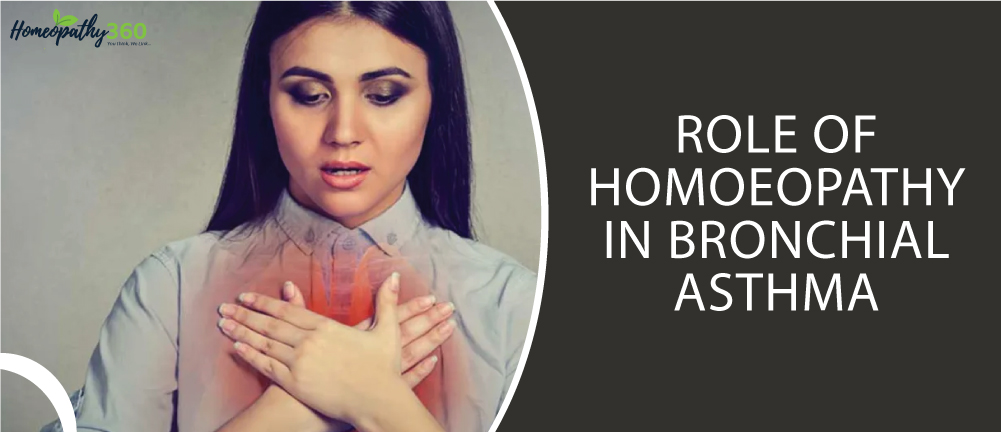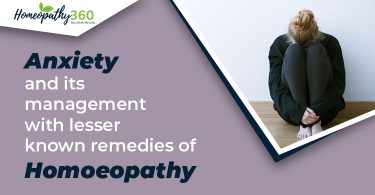
Asthma is a disease of respiratory system in which respiratory passages in the lungs becomes over reactive and over responsive. Because of this increased sensitivity, lungs become inflamed when exposed to some irritants such as col d air, smoke, pollen etc. Asthma causes inflammation of the lungs and causes and results in narrowing of the respirat ory passages.
Bronchial Asthma is a chronic inflammatory disorder characterized by episodes of breathlessness, wheezing, cough, chest tightness etc caused due to bronchial hyper-responsiveness and variable air flow obstruction which is reversibl e spontaneously or with treatment.1 Asthmatics harbour a special type of inflammation in the airways that makes the m more responsive than nonasthmatics to a wide range of triggers, leading to excessive narrowing with consequent r educed airflow and symptomatic wheezing and dyspnoea. Narrowing of the airways is usually reversible, but in som e patients with chronic asthma there may be an element of irreversible airflow obstruction.2
EPIDEMIOLOGY : Bronchial asthma is recognized as major health problem by the World Health Organization.3According to latest Glo bal Burden of Diseases (GBD) study, 339.4 million people in the world have high burden of asthma. Globally asthm a is ranked 16th among the leading causes of years lived with disability and 28th among the leading causes of burde n of diseases.4 Prevalence of asthma is high in developed countries compared to developing countries.5 In India, abo ut 15-20 million were estimated to be asthmatic. In India, its prevalence is about 2 percent.6 It is one of the cause of impaired quality of life with decreased ability to complete daily activities (85%), physical activity limitation (69%), l oss in productivity at work (73%) or study (64%), and limits in leisure and lifestyle (78%).7
AETIOLOGY AND RISK FACTORS : Asthma is a heterogeneous disease with interplay between genetic and environmental factors. Several risk factors tha t predispose to asthma have been identified. These should be distinguishes from triggers, which are environmental fa ctors that worsen asthma in a patient with established disease.2 Endogenous risk factors include genetic predispositio n, gender, atopy, ethnicity and exogenous risk factors are allergens, occupational sensitizers, smoking, infection, obe sity, dietary factors etc.
1.Genetic Predisposition: The familial association of asthma and a high degree of concordance for asthma in identica l twins indicate a genetic predisposition to the disease. The most consistent findings have been associations with pol ymorphisms of genes on chromosome 5q, including the T helper 2 (TH2) cells interleukin (IL)-4, IL-5, IL-9, and IL13, which are associated with atopy. Novel genes that have been associated with asthma, including ADAM-33, and DPP-10, have also been identified by positional cloning.2
2. Atopy: The genetic predisposition to IgE mediated response to common allergens is the strongest identifiable fact or predisposing factor for the development of asthma.8 About 80% of asthmatic patients suffer from other allergic di seases like allergic rhinitis and atopic dermatitis. The allergens that lead to sensitization are usually proteins that hav e protease activity, and the most common allergens are derived from house dust mites, cat and dog fur, cockroaches ( in inner cities), grass and tree pollens, and rodents (in laboratory workers).2
3. Respiratory tract Infections: viral infections (especially rhinovirus) are common triggers of asthma exacerbations. There is some association between respiratory syncytial virus infection in infancy and the development of asthma. A typical bacteria such as mycoplasma pneumonia and Chlamydia pneumonia involved in asthma.
4. Diet: Diets low in antioxidants such as vitamin C and vitamin A, magnesium, selenium, and omega 3 polyunsatur ated fats (fish oil) or high in sodium and omega-6 polyunsaturated fats are associated with an increased risk of asthm a.2
5. Occupational asthma: Has become common work-related respiratory disease in the world and common among adu lts of working age.9
6. Exercise: Exercise is a common trigger of asthma, particularly in children. The mechanism is linked to hyperventil ation, which results in increased osmolality in airway lining fluid and triggers mast cell mediator release, resulting in bronchoconstriction. Exercise-induced asthma (EIA) typically begins after exercise has ended and resolves spontane ously within about 30 min.2
7. Hormones: Some women show premenstrual worsening of asthma. They are related to progesterone and in severe cases may be improved by treatment with high doses of progesterone or gonadotropin-releasing factors. Thyrotoxico sis and hypothyroidism can both worsen asthma, although the mechanisms are uncertain.
8. Gastroesophageal reflux: Gastroesophageal reflux is common in asthmatic patients because it is increased by bron chodilators. Although acid reflux might trigger reflex bronchoconstriction, it rarely causes asthma symptoms.
9. Obesity: Asthma occurs more frequently in obese people (body mass index >30 kg/m2) and is often more difficult to control.
10. Air pollution: Air pollutants, such as sulphur dioxide, ozone, and diesel particulates, may trigger asthma sympto ms. Indoor air pollution may be more important with exposure to nitrogen oxides from cooking stoves and exposure to passive cigarette smoke. There is some evidence that maternal smoking is a risk factor for asthma.
11. Stress: Many asthmatics report worsening of symptoms with stress.
12. Allergens: Inhaled allergens are common triggers of asthma. Domestic pets, particularly cats, have also been ass ociated with allergic sensitization, but early exposure to cats in the home may be protective through the induction of tolerance. In thunderstorms the pollen grains are disrupted, and the particles that may be released can trigger severe a sthma exacerbations (thunderstorm asthma).
13. Air pollution: Air pollutants, such as sulphur dioxide, ozone, and diesel particulates, may trigger asthma sympto ms. Indoor air pollution may be more important with exposure to nitrogen oxides from cooking stoves and exposure to passive cigarette smoke. There is some evidence that maternal smoking is a risk factor for asthma.
14. Other factors: Lower maternal age, prematurity and low birth weight.
PATHOPHYSIOLOGY T-lymphocytes play a key role in asthmatic airway inflammation and sensitisation. There are two types of T-lympho cyte helper (Th) cells. Th1 controls synthesis of Ig such as IgA and IgM whereas Th 2 controls IgE production. Usua lly, there is a balance between Th1/Th 2 switch. Exposure to an inducing factor sensitises T cells of a person with ge netic susceptibility with bronchial asthma, and it shifts the Th1/Th 2 switch in favour of Th 2 dominance. Once sensi tised, these Th 2 cells get into airway mucosa and governs IgE mediated responses of allergic reaction. In a normal i ndividual, when a noxious allergic substance enters the airway, IgA is released. However, in a sensitised person IgE is released. Once sensitised, the dose of the noxious agent that provoke asthma on subsequent exposure is much less.
Genetic disposition and exogenous factors trigger mainly three patho-physiological changes which characterize bron chial asthma. They are bronchial hyper-reactivity, bronchial inflammation and endo-bronchial obstruction.
Airway inflammation leads to airflow limitation by bronchospasms, mucosal oedema and formation of mucus plug. This inflammation persists for several years. Endo-bronchial obstruction, especially small and medium sized airway is the end product of these patho-physiological phenomena. Severity of asthma depends on the severity of pathology . Eventually this results in reduction of forced expiratory volume in 1s, forced vital capacity, peak expiratory flow an d increase in airway resistance.
CLINICAL FEATURES :
Typical asthmatic symptoms are recurrent episodes of dyspnoea [sometimes at rest], expiratory wheeze, cough and c hest tightness usually having an abrupt onset. Asthmatic symptoms are usually brought by coughing or sneezing on a llergen exposure. Asthma shows diurnal pattern with aggravation of symptoms and PEF in the morning. Attacks ma y occur seasonally or during all times of year.
It may lead to disrupted sleep due to cough and wheeze. There is an increased mucous production, which is thick, m ucoid and difficult to expectorate. History of recurrent episodes of asthma caused by one or more trigger factors is i mportant for the diagnosis of bronchial asthma. However, between episodes, patients usually remain symptom-free.1 0Inadequate symptom control, smoking, allergic rhinitis, chronic sinusitis, psychological factors, improper medicatio n, viral infections of upper respiratory tract, gastro-oesophageal reflux, occupational factors, climatic variations and disturbed sleep etc. contributes to severe asthmatic exacerbations.
Physical Examination : Rhonchi are heard as the most prominent sign of asthma, especially during expiration. At the time of asthma exacerb ation signs such as increased respiratory rate, flaring of alae nasi, use of accessory muscles of respiration, and pulsus paradoxus may be detected.
CLASSIFICATION OF ASTHMA : Bronchial asthma is classified into extrinsic [atopic] and intrinsic [cryptogenic] asthma.
Intrinsic Asthma: In intrinsic variety, external precipitating factors are known and are usually associated with atopic eczema etc. Family history of bronchial asthma can be observed in many cases and has raised level of IgE in serum. Intrinsic asthma occurs by the age 30 and here precipitating causes and raised antibody levels are not seen, but they have tendency to eosinophilia.
Extrinsic asthma
Extrinsic variety has better prognosis and usually sets by the age 10-15years.1
Have other atopic manifestation like urticaria, eczema, allergic rhinitis
Family history of asthma
Better prognosis
COMPLICATIONS : Even though rate of mortality is low, severe asthma can cause respiratory failure and death. Tendency to frequent res piratory infections, pulmonary collapse caused by mucus collection, pneumothorax, mediastinal emphysema and rib fractures due to violent cough etc. Children who have taken cortical steroids for control of asthma may show growth retardation. Frequent infections can lead to emphysema or chronic cor pulmonale.1
DIAGNOSIS AND INVESTIGATION OF ASTHMA
Blood Examination : Usually, patients have an eosinophil count in the range of 5% to 15%, or the absolute eosinophil count is more than 400. Total serum IgE and specific IgE are elevated in bronchial asthma.
Sputum Induction : Sputum examination can provide a useful clue about the severity of airway inflammation. Sputum is induced after ad ministration of hypertonic saline with a nebuliser. In patients with asthma, the number of eosinophils are increased i n the induced sputum. Estimation of eosinophilic cationic protein in sputum or urine is also found to be a useful test for assessment of the severity of airway inflammation.
Measurement of Lung Functions: Various types of lung function tests are available, but measurements of peak expiratory flow rate (PEFR) by a peak f low meter and forced expiratory volume in one second (FEV1)by a spirometer are most useful in a making diagnosis and assessing the severity of asthma.
Peak airflow meter- helps in the objective assessment of airflow obstruction and monitoring progression of disease a nd treatment. It measures peak expiratory flow rate [PEFR]; maximum expiratory flow rate over the first 10 millisec onds during a forced expiration. It is done by blowing out as hard as possible after a maximum inspiration to move t he pointer on the calibrated dial of instrument. Normal range is 450-700L/min in men and 300-500L/min in women. Serial PEFR measurement helps in diagnosis of asthma. A diurnal variation of >20% is considered as diagnostic.
Pulmonary function tests : These are non-invasive tests to know how lungs are functioning. It also helps to diagnosis, identify the severity of pu lmonary impairment and monitor the treatment and progress of disease. It measures the lung volumes, capacities, rat e of flow, gas exchange etc and compares with normal values adjusted for age, gender, height and ethnicity. It can be assessed using a spirometer.13
Spirometry: Asthma is diagnosed by demonstration of reversible airway obstruction in spirometry. A ratio of FEV1 and forced vi tal capacity (FVC) less than 0.7 is diagnostic of airway obstruction. After bronchodilator administration, FEV1 incre ases by more than 12% and 200 mL in asthmatic patients. It is called reversibility of airway obstruction which is cha racteristic of asthma.10
It is the simplest test for all respiratory functions. Spirometry begins with a full inspiration followed by a forceful ex piration which empties the lungs rapidly and expiration is continued as long as possible [preferably 6 seconds], follo wed by full inhalation. It generates pneumotachographs- plots volume and flow of air during each respiration. The fl ow-volume curves are produced with a positive expiratory limb and a negative inspiratory limb.13
Estimated FEV1 and FVC are the important parameters to assess the ventilatory capacity. By assessing the breathing patterns, it can detect the conditions like bronchial asthma, COPD, pulmonary fibrosis etc. thus it helps to diagnose of disease at the earliest, prognosis, assess effect of therapy, monitor lung growth, delineate risk factors etc.1
FEV1 [Forced Expiratory Volume in One Second] is the volume of air expelled in the first one second of a forcible e xpiration after a full inspiration. Normally it is more than 75%. It depends on the effort made by the patient, elastic r ecoil of lungs and positive thoracic pressure applied by the expiratory muscles. Airway obstruction is indicated by va lue less than 70%.
FEV1/ FVC measurement (Tiffeneau Pinelli index) helps to detect obstructive and restrictive lung disease. It is th e proportion of a persons vital capacity that they are able to expire in the first second of forced expiration to full fo rced capacity, represented as FEV1%. FEV1/FVC > 70%, means restrictive defect as FVC is reduced more than FE V1, seen in interstitial lung diseases like pulmonary fibrosis and chest wall deformities. FEV1/FVC < 70%, indicate obstructive defect as FEV1 is reduced more than FVC, seen in bronchial asthma and chronic obstructive pulmonary disease. Bronchodilator challenge testing is done to differentiate patients with reversible airway obstruction like asth ma. A bronchodilator is given and spirometry is repeated after several minutes, increase of FEV1 by 12% and FVC b y at least 200ml considered to be positive. Obstructive defects in patients with asthma have reversibility, where as th ose with COPD typically are not. The average forced expiratory flow rate over middle 50% of the FVC is called mid -expiratory rate [FEF25-75%]. Its reduction of less than 60% of predicted value with normal or low FEV1/FVC ratio confirms airway obstruction.1
Chest Radiograph : Radiograph of the chest may show hyperinflation in a patient with asthma. It may also reveal complications of sever e asthma such as rib fracture, pneumothorax, and pneumomediastinum.
High Resolution Computerised Tomography of Chest
High resolution computerised tomography shows areas of thickening of the bronchial wall in patient with severe asthma
Exhaled nitric oxide [FeNO] levels
FeNO levels are elevated in asthma patients due to increased levels of nitric oxide synthase in the respiratory mucosa . This test is done to measure airway inflammation. It is raised due to eosinophilic inflammation seen in acute airway inflammation, sputum eosinophilia and viral infections of respiratory tract.
DIFFERENTIAL DIAGNOSI
Congestive heart failure
Mechanical obstruction to airway
Pulmonary embolism
Vocal cord dysfunction
Tracheal and bronchial lesions
Eosinophilic pneumonias
Systemic vasculitis
In children, other upper airway diseases such as allergic rhinitis and sinusitis should be considered as well as other causes of airway obstruction including foreign body aspiration, tracheal stenosis, laryngo- tracheomalacia, vascular rings, enlarged lymph nodes or neck masses. Bronchiolitis and other viral infections may also produce wheezing MANAGEMENT .
Patient Education: It is aimed to enable asthmatic patient to treat himself under guidance of his doctor. It is achieved by proper education of the patient. Every patient with asthma should learn to take medicines regularly, correctly and understand the difference between relieving and preventive medicines. Identification and avoidance of risk factors and triggers involved in asthma are also important components of patient education. Identify and reduce exposure to risk factors: Asthma exacerbation can be caused by a variety of trigger factors. Early identification of a trigger factor and preventing its exposure improves asthma control and reduces requirement of medicines.
Assess, monitor and treat asthma: Asthma control is assessed and then patient is treated to achieve the control. Once adequate control is achieved, the patient is monitored regularly to maintain the control. Avoiding the aggravating factors and allergens? especially in case of occupational and atopic asthma. Avoidance of sensitizing agents in few instances cured or substantially improved asthma patients. Maintain optimal humidity, prev ent mould spores, cleaning house regularly to avoid dusts. Maintain healthy weight; overweight can worsen asthma symptoms.15 Cognitive behavioural therapy improves the quality of life, anxiety levels and asthma control especially in adults.16 Regular exercising can strengthen the lungs and there by relieve symptoms. But exercise induced asthma typically d evelop clinical features with exercise. Swimming causes increased pulmonary function and lowers the risk of asthma related symptoms.17
Cessation of smoking : Breathing exercises and Yoga known to be helpful in management of allaying paroxysms.1 It improves asthma speci fic health status but not asthma Patho -physiology. The mean FEV1, PEFR are improved with yoga breathing exercis es. This also reduced the use of inhalers.8 Bronchodilators act primarily on airway smooth muscle to reverse the bronchoconstriction of asthma. There are thre e classes of bronchodilator in current use: b2-adrenergic agonists, anticholinergics, and theophylline; of these, b2-ag onists are by far the most effective.
HOMOEOPATHIC APPROACH
Homeopathy is a science based on laws of similar, which means it treats the disease with medicines producing similar symptoms when given in healthy individuals. Homeopathy treats the person as a whole.
There are medicines given to treat the acute attacks of asthma as well as to prevent the recurrence of it, also to treat the allergies which may trigger the attack of asthma.
Homoeopathic system evolved a drug regimen of using acute remedies for acute attack and constitutional deep acting remedies to prevent recurrence.
Among the disease classification of Hahnemann, asthma comes under true natural chronic disease caused by the chr onic miasm. It also excited by a number of precipitating and maintaining factors and influenced by genetic family hi story. Asthma can be considered as intermittent disease as it recurs at regular intervals in some patients. Similarly, it can be regarded as alternating disease as they sometimes alternate with skin diseases.
Asthma can be caused by psora, syphilis, sycosis or the combinations of these. In 80th aphorism, Hahnemann says the monstrous internal chronic miasm the psora, the real fundamental cause and producer of all other numerous diseases including asthma and ulceration of lungs etc.
RELATED STUDIES IN HOMOEOPATHY
A study conducted at 5 units / institutes of Gudivada, Andra pradesh, Shimla, Udupi and Delhi on 2641 subjects an observational study to conduct a review on clinical research work of the council in the field of asthma. The results
of which showed Arsenicum album as most effective in treating bronchial asthma- it was prescribed to 1042 subjects
in which 933 were better. Other remedies used were Kali carbonicum, Hepar sulphuricum, phosphorous, Carbo vegetabilis and Bryonia. Conclusion showed that there was positive outcome in controlling acute episodes of asthma, reducing the frequency, intensity of subsequent episodes and weaning off of bronchodilators.
In a study conducted at west Bengal, India comprising of 140 samples using spirometry in a double blind randomized, placebo controlled clinical trial, the primary objective was to determine the action of homoeopathic medicines over placebo. The result obtained was group differences over 3 and 6 months showed significant differences in improvement in UC+IH compared to UC+P (p<0.01) with moderate to large effect sizes. Conclusion showed that homoeopa thy seemed superior to placebo in the treatment of bronchial asthma in adults.
The study on the efficacy of homoeopathic treatment in modulation of immunoglobulin E (IgE) levels in bronchial asthma demonstrated the reduction in the IgE and Absolute Eosinophil Count level and improvement in pulmonary functions along with clinical improvement in bronchial asthma under homoeopathic treatment. Sulphur, Arsenicum alb um and Pulsatilla were found to be more effective in reducing IgE in this study.
A retrospective evaluation of the study on the results of homoeopathic treatment of 62 patients suffering from bronc hial asthma showed a very significant statistical improvement in the condition.
A study conducted by Dr. Parth Aphale in 2018, concluded that the medicines Ars.alb, Spongia, Pulsatilla are effecti ve in the managing the acute attacks and recurrent exacerbations of asthma. Among them Arsenicum album was most effective remedy.
To Read More Please Read Below PDF…..





